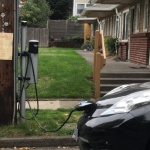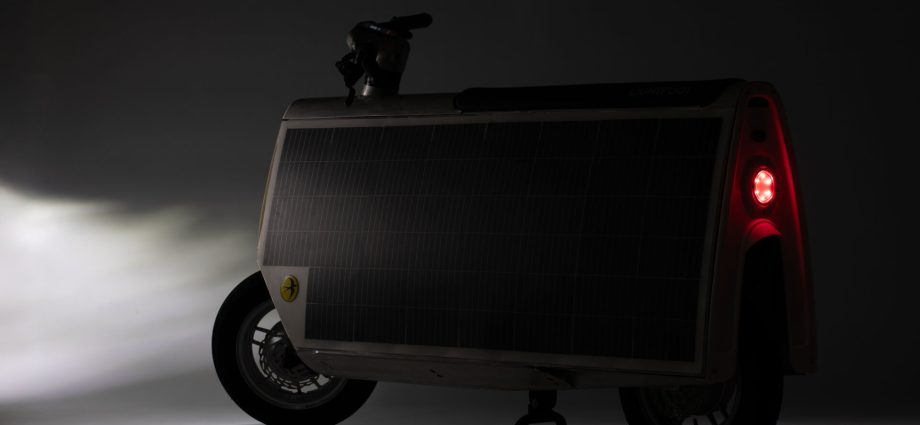Picture this: a scooter that never needs a charging station because it fuels itself with sunlight. Sounds like sci-fi? Well, solar-powered scooters are already here—and they’re quietly revolutionizing urban mobility. From college campuses to bustling city streets, these sleek, energy-efficient rides are gaining traction. But how far can they go? Let’s dive in.
Why Solar-Powered Scooters Are Catching On
Honestly, the appeal isn’t hard to grasp. With climate change breathing down our necks and gas prices doing their rollercoaster thing, people crave alternatives. Solar scooters hit a sweet spot: they’re affordable, low-maintenance, and guilt-free. Here’s what’s driving their rise:
- Zero emissions: Unlike gas scooters, they don’t spew pollutants. Just clean, quiet energy.
- Lower costs: No gas, fewer mechanical parts to maintain. Charging? Free, courtesy of the sun.
- Energy independence: Forget hunting for charging ports. Park it outside, and it juices up on its own.
- Urban-friendly design: Compact, lightweight, and perfect for dodging traffic jams.
That said, they’re not flawless. Cloudy days can be a buzzkill, and early models had… let’s call it “room for improvement” on speed. But tech’s catching up fast.
The Tech Behind Solar Scooters
How do these things work? Well, it’s simpler than you’d think. Solar panels (usually on the handlebars or deck) soak up sunlight, converting it into electricity stored in a battery. That battery powers the motor. Some models even send extra energy back to the grid—talk about overachieving.
Key Components:
| Solar Panels | Thin, flexible, and efficient—often monocrystalline for max energy conversion. |
| Battery | Lithium-ion, usually. Lightweight and holds a charge longer. |
| Motor | Brushless DC motors for smoother rides and less wear. |
| Regenerative Braking | Recaptures energy when you brake. Fancy, right? |
Early versions struggled with panel efficiency, but newer models? They’re like the Tesla of scooters—smarter, sleeker, and way more capable.
Where Solar Scooters Shine (Literally)
Not every city’s a solar scooter paradise—yet. But in places with abundant sunshine and dense traffic, they’re a game-changer. Think:
- Campus commuters: Students zipping between classes without hunting for outlets.
- Last-mile delivery: Couriers using solar scooters for quick, eco-friendly drop-offs.
- Tourist hotspots: Rentals in sunny destinations like Barcelona or Miami.
And get this: some cities are offering incentives for solar scooter adoption. Tax breaks, dedicated lanes—even subsidies. The future’s looking bright. Pun intended.
Challenges Holding Them Back
Okay, time for reality. Solar scooters aren’t perfect. Here’s what’s tripping them up:
- Weather dependence: Rainy climates? Not ideal. Though hybrid models (solar + plug-in) help.
- Upfront cost: Cheaper than a car, sure, but pricier than standard e-scooters… for now.
- Battery limits: Even with solar assist, range anxiety’s still a thing on long rides.
- Infrastructure gaps: Cities built for cars aren’t always scooter-friendly.
Still, these are growing pains. Remember when electric cars seemed impractical? Yeah. Exactly.
The Road Ahead: What’s Next for Solar Scooters?
Here’s where it gets exciting. Innovations are popping up faster than you can say “photovoltaic.” A few trends to watch:
1. Better Batteries, Longer Ranges
Solid-state batteries could double (or triple) range. Pair that with solar, and we’re talking cross-city trips on sunshine alone.
2. Solar Skin Tech
Imagine panels so thin they’re woven into the scooter’s frame. No bulky add-ons—just seamless energy harvesting.
3. Smart Grid Integration
Scooters feeding excess energy back to the grid during peak hours? It’s in the works. Your ride could power your home.
4. Shared Mobility Boom
Companies like Lime and Bird are eyeing solar fleets. Dockless, self-charging scooters? That’s the dream.
Final Thoughts: More Than a Trend
Solar-powered scooters aren’t just a niche gadget—they’re a glimpse into a cleaner, smarter way to move. Sure, hurdles remain. But with tech advancing and cities waking up to sustainable transport, their potential is… well, sky-high. The sun’s not going anywhere. Maybe our scooters shouldn’t either.










